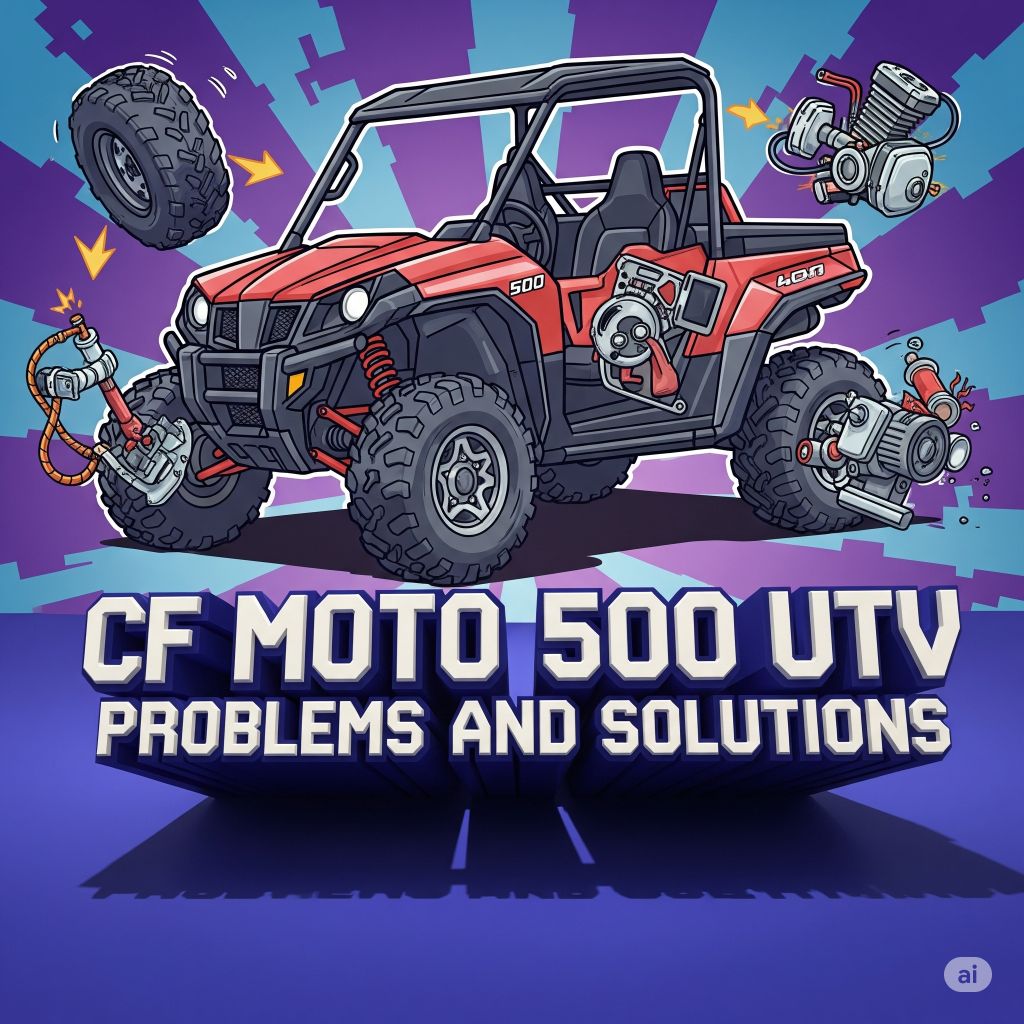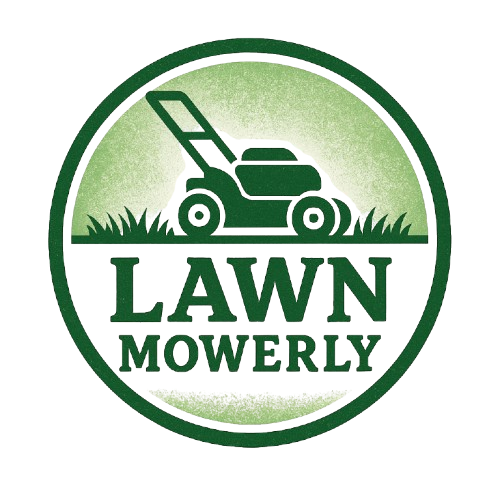
The CFMOTO 500 series UTV—often marketed as the UForce 500 (utility-oriented) or CForce 500 (sport-utility)—offers strong value with features like power steering, CVT drive and a diesel or EFI engine option at a mid-price point. Yet owners frequently encounter issues rooted in component quality, cooling systems, drive belts and electrical gremlins. Drawing on community feedback, service bulletins and real-world fixes, this guide uncovers:
- Core design and intended applications
- Common failures and root causes
- Step-by-step diagnostics and field repairs
- Preventive maintenance schedule
- Upgrades and aftermarket enhancements
- Parts-sourcing strategies
- Safety best practices
- Real-world case studies
By applying these insights, you’ll minimize downtime, extend component life and get the most out of your CFMOTO 500 UTV.
1. CF MOTO 500 Overview
- Engine
- 495 cc single-cylinder EFI or diesel option
- Liquid-cooled with electric radiator fan
- Transmission
- CVT with belt-driven primary and secondary clutches
- High (“H”), Low (“L”), Neutral, Reverse gears
- Drive & Suspension
- 4×2 standard; 4×4 selectable front differential
- Independent A-arm front suspension; dual-shock rear
- Payload & Tow
- Approx. 1,000 lb bed capacity; 1,300 lb tow rating
- Features
- Hydraulic power steering; lockable differential
- Electric dump-bed and 12 V accessory port
Intended Use: Light agricultural work, property maintenance and light trail riding. Not designed for continuous heavy forestry or rock-gardening duties.
2. Common Problems & Underlying Causes
2.1 Engine Starting & Stalling
- Symptoms:
- No-crank or slow-crank on key-on
- Dies at idle after warm-up
- Lungs and surges after tilt or side transport
- Root Causes:
- Weak battery, corroded terminals or undersized cable gauge
- Faulty engine-start switch (safety interlocks)
- Air in fuel lines, clogged injector or fuel filter
- Tilt-sensor quirks: when stored/transported on side, the engine cutoff latches until WOT clears it [(see user report)]
2.2 Cooling System & Overheating
- Symptoms:
- Temperature gauge climbs rapidly under load
- Radiator fan does not engage or runs continuously
- Coolant leaks from hose, fittings or sensor ports
- Root Causes:
- Failed radiator-fan switch or temperature sensor [(multiple owners reported early switch failures)]
- Debris-clogged radiator fins, bent core tubes
- Weak or worn water-pump bearings impeding coolant flow
- Cracked plastic hoses or loose hose-clamp seals
2.3 CVT Drive Belt & Clutch Issues
- Symptoms:
- Slippage under load, jerky engagement
- Premature belt glazing or fraying (~3,000–5,000 km)
- Excessive belt dust in clutch housing
- Root Causes:
- OEM belt material less durable on heavy loads
- Contaminated clutch surfaces (oil, grease, debris)
- Worn primary-spring tension or weak secondary-helix ramp
2.4 Electrical Gremlins
- Symptoms:
- Intermittent lighting, dash-gauge failures
- Erratic bed-lift actuator or accessory port power loss
- Blown fuses soon after installing winch or aftermarket lights
- Root Causes:
- Thin gauge wiring and undersized ground straps
- Unsealed connectors prone to moisture ingress
- Overloaded circuits when adding high-draw accessories
2.5 Plastic Trim & Panel Durability
- Symptoms:
- Panels rattling or flying off during transit
- Cracked dash-bezel, instrument-pod fatigue
- Root Causes:
- Low-grade ABS panels lacking reinforcement ribs
- Fastener holes stretching under vibration
- UV-degradation leading to embrittlement
2.6 Steering & Suspension Wear
- Symptoms:
- Wandering or shimmy at moderate speeds
- Creaking or clunking over bumps
- Root Causes:
- Loose or worn tie-rod ends and ball-joints
- Shock seals leaking, reduced damping performance
3. Troubleshooting & Repair Procedures
3.1 Engine Start & Stall Fixes
- Battery Check
- Measure resting voltage ≥12.4 V; under-load drop should not fall below 10 V.
- Clean posts, apply dielectric grease, tighten cable lugs to 6–8 ft-lb.
- Start-Switch & Safety Interlock
- Bypass seat-sensor or shifter-interlock temporarily with a jumper (consult manual) to isolate switch faults.
- Replace engine-cutoff switch if no 12 V present when key is at “Run.”
- Fuel & Injector Service
- Replace inline fuel filter every 100 hr or annually.
- Bleed air: loosen injector-pump banjo bolt, crank until solid fuel emerges.
- Tilt-Latch Clearing
- After side‐tilt storage, increase engine RPM to WOT in neutral for 10 sec to reset the safety latch as users have discovered.
3.2 Cooling System Repairs
- Fan Switch & Sensor
- Bench-test the fan switch (cold-boot continuity at room temp; open above 90 °C). Replace if out of spec.
- Swap temperature sensor with a known good unit to confirm gauge response.
- Radiator Cleaning & Repair
- Use low-pressure water and soft brush to clear fins front/back.
- Replace bent cores or consider aluminum core retrofit for heavy-duty use.
- Hose & Clamp Service
- Inspect hoses for soft spots; replace faded plastic hoses with silicone upgrade hoses.
- Use stainless-steel T-bolt clamps torqued to 6 ft-lb; replace crush-type clamps.
- Water Pump Inspection
- Spin pump pulley by hand: any roughness dictates seal/bearing rebuild.
3.3 CVT Belt & Clutch Overhaul
- Belt Replacement
- Remove plastic guard; unbolt clutches; inspect belt for glazing or misshapen cords.
- Install genuine CFMOTO belt, ensuring correct orientation (arrow toward primary clutch).
- Clutch Housing Service
- Clean sheaves with brake cleaner; lightly scuff with 120-grit to restore friction surface.
- Replace primary spring and secondary helix ramp per service bulletin for heavy-use applications.
- Sealing & Ventilation
- Install aftermarket sealed CVT cover to block dust/oil ingress.
- Add breather extension hose high on the frame rail to prevent water entry.
3.4 Electrical Repairs & Upgrades
- Ground Strap Reinforcement
- Add 4 AWG braided ground strap from battery negative to chassis frame.
- Clean mating surfaces to bare metal; apply anti-corrosion grease.
- Connector Sealing
- Inject dielectric grease into all multi-pin connectors.
- Replace worn harness clips; secure loose wires with zip ties away from heat or pinch points.
- Fuse & Relay Upgrades
- Upgrade accessory circuits to auto-reset circuit breakers (30 A) instead of fuses.
- Use solid-state relays for lighting or winch to reduce contact wear.
3.5 Plastic Panel & Trim Repair
- Fastener Reinforcement
- Drill out stretched holes; insert nylon rivet nuts and secure with machine screws.
- Apply small adhesive-backed rubber pads at high-vibration zones.
- UV-Protection
- Wipe all panels with UV-inhibitor spray (e.g., 303 Aerospace Protectant) quarterly.
- Replace cracked bezels or vents with polycarbonate versions when available.
3.6 Steering & Suspension Service
- Tie-Rod & Ball-Joint Replacement
- Jack front, remove wheel; torque new tie-rod ends to 30 ft-lb; apply chassis-lubricant grease.
- Shock Absorber Rebuild
- Disassemble shocks; replace worn seals, top-off nitrogen to 100 psi.
- Upgrade to gas-charged shocks (Fox, King) for more consistent damping.
4. Preventive Maintenance Schedule
Tip: Keep a maintenance log in glovebox. Note hours, dates, parts and any odd noises to spot trends early.
5. Upgrades & Aftermarket Enhancements
- Aluminum Radiator Core: Improves cooling under intense loads.
- Performance CVT Kit: Heavy-duty springs and heat-resistant belt from GBoost or EPI.
- Sealed CVT Cover: Blocks dust and debris, prolonging belt life.
- Kosworth Style Gauges: Replace flimsy stock cluster with sealed dial gauges resistant to moisture.
- Lithium-Iron Battery: Saves ~20 lb, cranks faster in cold weather.
- LED Light Bars w/ Relay Harness: Reduce electrical load and prevent fuse-blowouts.
- Kevlar-Braided Hoses: Upgraded power-steering and brake lines for abrasion resistance.
6. Parts Sourcing & Compatibility
- Authorized Dealers: Best for genuine engine sensors, belts and CVT components.
- Online Aftermarket: XtremeParts, UTVDirect—stock plastic panels, upgraded hoses and clamps.
- Industrial Cross-Referencing: Gates belt part numbers can match CFMOTO belts, ensuring broader availability.
- Community Networks: UTV forums often have group buys on springs, helix ramp kits and sealed covers.
Always verify parts against your VIN or serial plate (under the driver’s seat) to ensure correct engine-type and model-year compatibility.
7. Safety Best Practices
- Lockout/Tagout: Remove key, disconnect battery negative before any service.
- Proper Lifting: Use axle stands, never rely on dump bed alone.
- Hydraulic Precautions: Release system pressure before hose removal; wear protective gloves.
- Personal Protective Equipment: Cut-resistant gloves for belt/clutch work; eye-protection when flushing fluids.
- Heat Awareness: Allow engine and radiator to cool fully (30+ min) before opening pressure cap.
8. Real-World Case Studies
Case Study A: Radiator Fan Failure
- Symptom: Frequent overheating in summer, fan never engaged.
- Diagnosis: Faulty fan-switch out of spec, radiator fins clogged.
- Solution: Replaced switch and pressure-tested cap; power-washed core. Added auxiliary electric fan wired via thermostat relay. No repeat overheating.
Case Study B: CVT Belt Slippage in Forestry Use
- Symptom: Slippage under heavy brush clearing, belt glazed after 30 hr.
- Diagnosis: Stock belt not rated for intensive, low-speed torque. Clutch housing full of belt dust.
- Solution: Installed heavy-duty performance belt and stronger primary spring. Fitted sealed cover and extended breather. Belt life jumped to 80 hr.
9. Conclusion & Key Takeaways
- Proactive Maintenance prevents 80% of common failures—follow the 25–50–100-hr schedule religiously.
- Cooling & CVT are weak points: upgrade radiator core, fan switch, belt and clutch components for heavy use.
- Electrical & Trim shortcomings are resolved by reinforcing grounds, sealing connectors and retrofitting stronger plastic fasteners.
- Aftermarket Kits (sealed CVT covers, performance springs, aluminum radiators) yield dramatic reliability gains.
- Safety First: Always de-energize, relieve hydraulic pressure and secure your UTV before any work.
By applying these targeted solutions—drawn from owner experience and service-bulletin insights—you’ll keep your CFMOTO 500 UTV running reliably, efficiently and safely season after season.

I’m David man behind Lawn Mowerly; I’ve been dealing with lawnmowers and Tractors with my father since I was a kid. I know every make and model and what each one is capable of and love helping people find the perfect equipment for their needs.
